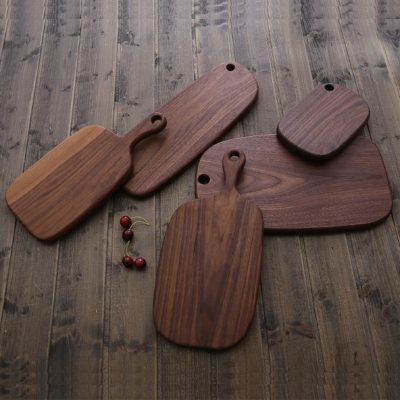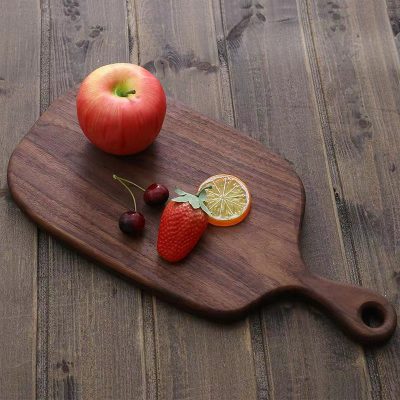Recognition and pros and cons of cutting boards
At present, the common cutting boards on the market are made of bamboo, wood and plastic, but qualified bamboo cutting boards should be made of natural plants, the material is relatively strong and not easy to crack or slag, and dirt is not easy to be stuffed in the gaps. Cleaner and easier to clean. Because the bamboo cutting board is easy to air dry, not easy to mold, and has peculiar smell, it is a good choice. The fly in the ointment is that the bamboo cutting board is mostly spliced due to its insufficient thickness, and cannot withstand heavy blows when used, so it is best used for chopping vegetables or fruits, but not very suitable for chopping meat.
Wooden cutting boards are thick and tough, making them more suitable for chopping meat or cutting hard foods. But in use, the selected wood material is not good. It is easy to chop the wood slag out, mix it with meat dishes and eat it into the body, which is detrimental to health in the long run. Some woods, such as poplar, are prone to cracking. Therefore, it is best to soak the wooden cutting board with vegetable oil for 2 hours before use, so that it is not easy to crack. When buying a cutting board, be sure to choose a safe wood, and a cutting board made of pine, saponin, birch or willow is better.
Plastic cutting boards are mostly made of polypropylene, polyethylene, etc., and are not suitable for cutting some greasy food, otherwise it is difficult to clean. The plastic cutting board is not resistant to high temperature, and hot things are cut on it, which is easy to deform. Some cutting boards contain plasticizers such as lead and cadmium, which may even cause cancer if used for a long time; and some plastic cutting boards with rough texture are easy to be cut into pieces and enter the body with food, causing damage to the liver and kidneys.
No matter what kind of cutting board, it should be cleaned in time after use, and hung upright in a ventilated place to allow it to air dry. Do not place it close to the wall or flat, otherwise the other side will not be able to dry, and it is easy to breed mold. When cleaning, it can be scrubbed with a hard brush dipped in detergent, and then rinsed repeatedly with clean water, or it can also be scalded with boiling water, which can play a sterilizing effect.
General household cutting boards are made of oolong wood (commonly known as iron wood) or bamboo pieces, which are more popular because they are firm and do not desquamate. However, oolong wood often contains certain odors and toxic substances. Using it to make cutting boards not only pollutes dishes, but also easily causes abdominal pain, nausea, and vomiting. The cutting board bonded with bamboo chips is also harmful to the human body because the adhesive often contains a certain amount of formaldehyde and benzene.
So the cutting board should be willow or pine as well. Because both types of wood are relatively soft, they won’t break easily when you chop them with a knife. In addition, these two kinds of wood are not easy to crack after frequent washing with water.







